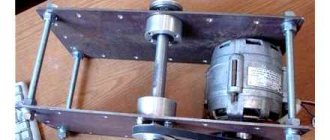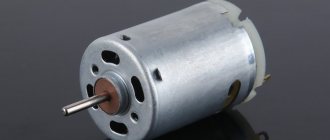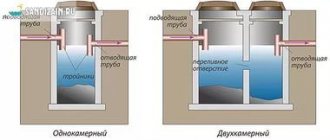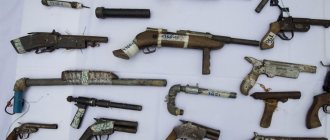Autogenous welding and cutting are widely used due to its versatility in working with different metals. Mini-autogen is a step towards increasing the convenience of using this method at home and the possibility of easy transportation of the device.
Scheme of a mini-autogen.
This type of metal welding is especially loved by small workshops, sometimes located in remote areas and rural areas. Mini-autogen allows for on-site repair work. A small and convenient device of this type can be made with your own hands and then used at your discretion.
Features of autogen
Autogen is a device for gas welding or cutting metal products. Autogen welding is based on the melting of metals by a flame caused by a mixture of oxygen and flammable gas: hydrogen, acetylene, butane, propane, gasoline vapor, etc. The joining process is carried out as follows:
Autogen welding methods.
- filler material is introduced;
- with the help of a flame of burning gases in the weld pool area, the edges of the workpieces and filler material are melted;
- When the melt solidifies, a weld is formed.
The composition and dimensions of the filler rod are selected based on the material of the parts and their thickness.
Heating of materials to melting occurs relatively slowly, which ensures uniform heating of the zone. Due to this feature of the thermal regime, autogenous welding has the main advantages: the ability to connect steel plates of small thickness, welding non-ferrous metals, alloy steels that do not allow sudden annealing during processing, joining and repairing cast iron parts.
How does autogen work?
Technical progress has somewhat changed the design of the autogen, which initially included a gas burner, an oxygen cylinder, an acetylene generator and connecting hoses; the control and reduction of oxygen pressure was carried out by a reducer with a pressure gauge. Over time, for greater convenience, the acetylene generator with automatic maintenance of gas pressure was replaced by an acetylene cylinder, but the name “autogen”, probably derived from the combination of the words “automatic generator”, has taken root and is widely used by craftsmen. The operating principle of the autogen is based on the property of metal to burn in chemically pure oxygen, and therefore there are two key points that are necessary when operating the cutter: a direct cutting jet of pure oxygen and a heating gas (usually acetylene or propane). The design of a modern autogen is quite simple and represents the interaction of two basic functional parts:
- a tip for supplying a jet of cutting flame, having internal and external mouthpieces united by a nozzle nozzle;
- a barrel with a chamber connecting gas and oxygen and valves located on the body for connecting hoses to oxygen and gas units and adjusting the gas supply volume, speed and pressure of the oxygen jet.
The reduced pressure (the required level of oxygen discharge) is formed due to the injection barrel, where oxygen is partially supplied and from where the jet exits into the mouthpiece channel at high speed. Another direction of oxygen movement will be the main channel of the internal mouthpiece, which forms the cutting jet. The mixing section of the autogen is necessary to combine the gas component (acetylene or propane) and oxygen - in the future, this mixture will become a heating flame supplied between the internal and external mouthpiece of the tip. The tip is attached to the barrel using an ordinary union nut.
Structurally, the models of various cutters from different manufacturers may have some nuances, but in general the configurations and operating principle are quite traditional - changes in the design mostly bring ease of use and greater safety. Modern gas cutting or welding is already unthinkable without these tools.
Principles of autogen miniaturization
One of the disadvantages of autogenous welding is the bulkiness of standard equipment. Currently, mini-devices are offered that allow you to carry the entire welding set manually. The bulkiness of the design is almost entirely caused by gas sources. The acetylene cylinders and generator are quite large in size and weight, which requires vehicles. A modern mini-autogen can be carried as a small hand tool, placed in a suitcase. The gas sources in such devices are small cans of compressed gas: oxygen, butane, propane, etc. The disadvantage of such mini-devices is the high price and small volume of cans, which causes problems when carrying out work in remote areas.
You can make an autogen with its own gas source and a small, simplified burner with your own hands. Such a portable device can contain a homemade hydrogen generator (based on the principle of electrolysis), which will provide power for gas welding for a sufficiently long time without replacing cylinders.
Autogen for cutting/welding metal: classification
The entire range of autogens available in specialized stores is divided according to various criteria:
- by purpose: special (for a special kind of specific work) and universal, suitable for most gas cutting and welding work. Universal torches equipped with an injector are simple and easy to use, are lightweight, and are capable of cutting workpieces with a thickness of 3...300 mm in all directions.
The type of combustible mixture forms its own classification:
- in very low-cost oxygen autogens, the formation of a burning jet occurs with oxygen;
- Kerosene cutters operate on kerosene vapor and are usually used for cutting carbon steel workpieces up to 200 mm thick. The rather complex design of such an autogen makes it practically inapplicable for small household work - kerosene autogens are usually used in the coal and mining industries (due to the high explosion hazard, propane/acetylene autogens are usually not used in these industries) ;
- considered the most reliable and safe, efficient and productive propane autogens are used for cutting ferrous and non-ferrous metals - most often for cast iron batteries, pipes, etc.;
- acetylene autogens will be the best choice when processing workpieces or elements of considerable thickness - the properties of the acetylene combustible mixture allow you to create a flame of maximum temperature: even a compact tool in its design will be convenient and effective when working with massive parts and workpieces;
- according to the design and method of mixing the oxygen and combustible components, autogens are divided into injection and non-injector;
- according to the method of metal cutting: autogenous separation, spear, surface or oxygen-flux processing (for high-chromium, high-alloy steels).
Whatever autogen is chosen by the master, it is important that it is efficient and productive, and corresponds to the nature of the work and the properties of the elements intended for cutting or welding.
Simple mini autogen
Figure 1. Diagram of an electrolyzer for autogen.
You can make a mini-autogen yourself using the principle of using oxygen and hydrogen obtained by electrolysis of an alkaline aqueous solution. This gas generator has small dimensions. A conventional rectifier is recommended as a source of electricity for electrolysis, with the help of which the batteries are recharged. The technology allows you to generate the required amount of combustible mixture, does not require complex shut-off equipment and complies with all safety measures.
The electrolyzer consists of two main plates, between which there are a number of electrodes in the form of steel plates. The battery assembled in this way is placed in an electrolyte - an aqueous solution of KOH or NaOH. When DC voltage is applied to the electrodes, the electrolysis process begins with the release of hydrogen and oxygen. The generated gases are discharged through a polymer tube into an intermediate container, from which they are supplied to the water seal. A mixture of distilled water and acetone in equal proportions is poured into the valve. Having passed through the valve, the gas is saturated with the combustible component and enters the burner nozzle in the form of a gas mixture ready for combustion. Figure 1 shows a diagram of the electrolyzer.
1.Tube with a diameter of 10 mm; 2. M8 hairpin; 3. M8 nut; 4 and 11. Main plate; 5. Bolt M10; 6. Electrode plate; 7. Rubber ring; 8. Fitting; 9. Washer; 10. Plastic tube with a diameter of 5 mm; 12. Fitting; 13. Intermediate container; 14. Base; 15. Terminal; 16. Tube; 17. Nozzle; 18. Shutter.
Figure 2. Diagram of a simple gas burner.
It is recommended that the electrolyzer body be made of plexiglass with a thickness of at least 10 mm, which will allow monitoring the electrolyte level in the container. Electrodes can be made in the form of plates 0.7-0.8 mm thick from stainless steel sheets, transformer iron, and nickel. A total of 9 electrodes are installed. Insulating rings about 6 mm thick made of rubber, resistant to alkalis and acids, as well as oil and petrol resistant properties, are fixed between the plates. The studs securing the main plates, in the amount of 4 pieces, should be insulated with cambric.
Electrical power is provided by a charger that produces a voltage of 2 V per electrode (up to 24 V). A device for charging car batteries of the VA-2 type shows good results in terms of gas volume. It is advisable to use an alkaline aqueous solution with an alkali concentration of 6-8% as an electrolyte.
For the bodies of the intermediate container and the shutter, cans for gas lighters can be used. The fittings of both containers are best made from copper or brass tubes with a diameter of 4-6 mm and secured to the top of the containers, on the thread.
The electrolyzer body and containers are connected to each other by a polyvinyl chloride tube. To ensure reliable fastening and tightness of the inputs, it is advisable to install fittings and attach the tube to them. A pre-prepared mixture of water and acetone (ratio 1:1) is poured into the valve body. If it becomes possible to add methyl alcohol instead, this will increase the temperature of the burner flame to 2,600ºC. The water seal container is connected by a polyvinyl chloride tube to the burner nozzle, where the generated and enriched gas mixture enters.
Making a gas burner
For a simple gas burner, you will need dropper needles equipped with restrictive clamps.
For a home mini-autogen you can make a fairly reliable gas burner of a very simple design. In Fig. 2 shows a diagram of such a design.
To supply the gas mixture, it is recommended to use a needle for inflating footballs. At a distance of up to 20 mm, an incision is made using a needle file, through which a thinner needle from the dropper is inserted, previously bent at 45ºC at a distance of 15-20 mm. The structure is fixed with copper wire and carefully soldered, all gaps are sealed with varnish.
The output of the large needle is connected to the electrolyzer, i.e. designed for supplying a flammable gas mixture. Additional enrichment of it with oxygen is carried out through a small needle, which is connected to a container filled with compressed air.
The simplest container can be a ball chamber inflated by a pump or a polymer bottle into which air is forced by the same pump.
The use of dropper needles is also advisable because they are equipped with restrictive clamps that can be used to regulate the gas supply to the welding zone.
This completes the production of a simple mini-autogen. After ensuring the supply of both gas streams to the burner, they, connecting, are directed in one stream through the needle to the outside; The escaping gas is ignited and welding occurs. The temperature in the welding zone reaches 1,600ºС, which is enough to melt the edges of the metals and the filler rod.
Autogen. How to cut metal with gas?
Carrying out gas cutting or gas welding work requires not only careful adherence to safety precautions, but also specialized equipment: an autogen, also commonly called a gas torch or a gas cutter, will help perform work of varying complexity quickly, efficiently, and professionally.
In the article you will learn about the operating principle and classification of this tool. Gas cutting using autogen is a very common procedure, which is based on the property of metal to heat up under the influence of high temperatures, which makes it easy to cut it in the desired direction. The main areas of application of autogens are installation and construction work - both professional (industrial) and household; To perform welding, in addition to the autogen, a filler rod is required.
How does autogen work?
Technical progress has somewhat changed the design of the autogen, which initially included a gas burner, an oxygen cylinder, an acetylene generator and connecting hoses; the control and reduction of oxygen pressure was carried out by a reducer with a pressure gauge.
Over time, for greater convenience, the acetylene generator with automatic maintenance of gas pressure was replaced by an acetylene cylinder, but the name “autogen”, probably derived from the combination of the words “automatic generator”, has taken root and is widely used by craftsmen.
The operating principle of the autogen is based on the property of metal to burn in chemically pure oxygen, and therefore there are two key points that are necessary when operating the cutter: a direct cutting jet of pure oxygen and a heating gas (usually acetylene or propane).
The design of a modern autogen is quite simple and represents the interaction of two basic functional parts:
- a tip for supplying a jet of cutting flame, having internal and external mouthpieces united by a nozzle nozzle;
- a barrel with a chamber connecting gas and oxygen and valves located on the body for connecting hoses to oxygen and gas units and adjusting the gas supply volume, speed and pressure of the oxygen jet.
The reduced pressure (the required level of oxygen discharge) is formed due to the injection barrel, where oxygen is partially supplied and from where the jet exits into the mouthpiece channel at high speed.
Another direction of oxygen movement will be the main channel of the internal mouthpiece, which forms the cutting jet.
The mixing section of the autogen is necessary to combine the gas component (acetylene or propane) and oxygen - in the future, this mixture will become a heating flame supplied between the internal and external mouthpiece of the tip. The tip is attached to the barrel using an ordinary union nut.
Structurally, the models of various cutters from different manufacturers may have some nuances, but in general the configurations and operating principle are quite traditional - changes in the design mostly bring ease of use and greater safety. Modern gas cutting or welding is already unthinkable without these tools.
Autogen for cutting/welding metal: classification
The entire range of autogens available in specialized stores is divided according to various criteria:
- by purpose: special (for a special kind of specific work) and universal, suitable for most gas cutting and welding work. Universal torches equipped with an injector are simple and easy to use, are lightweight, and are capable of cutting workpieces with a thickness of 3...300 mm in all directions.
The type of combustible mixture forms its own classification:
- in very low-cost oxygen autogens, the formation of a burning jet occurs with oxygen;
- Kerosene cutters operate on kerosene vapor and are usually used for cutting carbon steel workpieces up to 200 mm thick. The rather complex design of such an autogen makes it practically inapplicable for small household work - kerosene autogens are usually used in the coal and mining industries (due to the high explosion hazard, propane/acetylene autogens are usually not used in these industries) ;
- considered the most reliable and safe, efficient and productive propane autogens are used for cutting ferrous and non-ferrous metals - most often for cast iron batteries, pipes, etc.;
- acetylene autogens will be the best choice when processing workpieces or elements of considerable thickness - the properties of the acetylene combustible mixture allow you to create a flame of maximum temperature: even a compact tool in its design will be convenient and effective when working with massive parts and workpieces;
- according to the design and method of mixing the oxygen and combustible components, autogens are divided into injection and non-injector;
- according to the method of metal cutting: autogenous separation, spear, surface or oxygen-flux processing (for high-chromium, high-alloy steels).
Whatever autogen is chosen by the master, it is important that it is efficient and productive, and corresponds to the nature of the work and the properties of the elements intended for cutting or welding.
Mini cutter
A manual autogen is usually small in size - an even smaller version of it is called a mini-cutter. The main characteristics of such a tool include a confident flame pressure and a gas tank of sufficient volume, allowing the device to be used even in windy weather.
During operation, it should be taken into account that the mini - autogen is not designed for long-term continuous use: high temperatures can melt the tool body without the possibility of repair or replacement of damaged parts.
However, the time of use is limited by the volume of the gas tank: the autogen lighter must be refilled periodically, and for this a regular collet cylinder is useful.
Unlike convenient and efficient modern manual models (including a rather expensive autogen with piezo ignition, activated by pressing just one button), mini-cutters are characterized by low cost, and therefore are available to literally everyone, not only professional, but also home craftsmen.
The main areas of use of such an autogen are household work that requires cutting or welding of metal elements: repair of air conditioners, cars, bicycles, refrigerators, etc. The disadvantages of the tool include the short length of the cutting flame, which somewhat limits the work of such a device with certain types of metals.
Operation of the autogen and features of its use
The sequence of working with autogen can be represented by the following steps:
- Studying the structure and operating principles of a particular model, checking the correct location of the autogen parts, connecting the hoses for supplying flammable gas and oxygen.
- Special rubber seals are treated with glycerin or a lubricant provided for this purpose. It is important that the connections of the threaded type autogen components are sealed - this minimizes the risk of gas leakage during operation of the gas autogen.
- By supplying a dosed stream of oxygen, a vacuum of gas is formed in the channels of the instrument.
- Opening the gas valve will ignite the combustible mixture, which heats the metal to a temperature sufficient for cutting.
- Valves on the oxygen and gas supply channels regulate the size of the cutting flame, the intensity and temperature of combustion in accordance with the materials of the workpiece, its thickness, etc.
- At the moment the metal, heated to the required temperature, is absolutely ready for cutting, a stream of cutting oxygen is supplied, and the part is cut properly.
- Extinguishing the burner flame is carried out in the reverse order - first the gas channel valve is tightened, then the oxygen channel. If the tip becomes very hot (which is quite possible during long-term work), cooling is carried out with cold water.
During operation, switching on and off the device, as well as its storage, fire safety rules should be followed and strictly observed.
Autogen maintenance
Proper use and after-use maintenance will not only make the work safe, but will also significantly extend the service life of the autogen.
A technological feature of autogen is the rapid wear of the nozzle and mouthpieces - internal and external, which are directly exposed to pure oxygen and gas.
The solution to this problem will be regular cleaning of the nozzle channels with a soft copper rod of suitable length, and with experience and work skill, competent and accurate selection of the match between the thickness of the metal workpiece and the pressure of the supplied cutting mixture will not allow the use of the autogen, as they say, for wear.
Autogen prices vary over a wide cost range: it is formed depending on the design and type of tool, its characteristics, functionality, purpose (domestic or industrial work), and country. High-quality and reliable, with a solid warranty period, models of gas cutters produced in South Korea or America are among the most expensive.
Necessary tool
To make a portable autogen with your own hands, you will need the following tool:
- electric drill;
- vice;
- Bulgarian;
- knife;
- scissors;
- pliers;
- set of taps and dies;
- file;
- needle file;
- brush;
- soldering iron;
- awl;
- calipers.
Autogenous welding is widely used for joining various metals, incl. colored. Its use is especially in demand in remote and rural areas, when carrying out repair work directly on site. You can make a fairly miniature autogen with an independent gas generator yourself.
DIY autogen
Any craftsman familiar with the basics of welding can assemble an autogen with his own hands. But only if you have a factory-made generator or a flammable gas cylinder, an oxygen cylinder, pressure gauges and hoses. You also need to buy an autogenous burner and filler rods.
Making a gas generator with your own hands is extremely dangerous - a mixture of acetylene and air is an explosive mixture, the behavior of which is not always predictable. Schemes and drawings of homemade acetylene generators found on the Internet, based on medical droppers or sprinklers from garden hoses, may be workable, but it is not recommended to check - the explosion of a gas cylinder is equal in destructive power to an average aerial bomb.
Mini autogen
For soldering, you can make an installation that uses hydrolytic hydrogen instead of acetylene.
This is a small compact gas welding machine, where silicone tubes are used as gas hoses, and the role of a burner is played by a needle from a syringe (options are possible). There are also plenty of diagrams of such devices on the Internet, but you can only use those that have a water seal on the outlet pipes. It is no coincidence that a mixture of hydrogen and oxygen is called detonating gas. But you can also buy an industrial mini-autogen, all the components of which fit into a small case. The kit includes two small cylinders, a cutter, thin hoses and pressure gauges. Such equipment can work with metals with a thickness from 0.1 to 300 mm. Of course, its reserve of autonomy is small, but such a device is distinguished by the highest mobility and, of course, safety.
We invite our readers to share their own experience with autogenous welding, the features of its use for different metals in different situations. The capabilities of the autogen are still completely unexplored - we will certainly publish the most interesting letters on the website.










